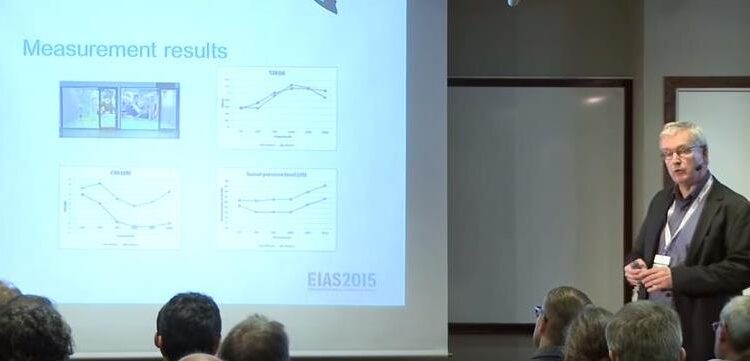
In anticipation of the next Ecophon International Acoustic Seminar (EIAS) we bring you these 4 presentations on acoustic descriptors from EIAS 2015. Much in the world has changed since 2015, but the need for more technical descriptors in evaluating room acoustic quality is not one of them. Technical objective descriptors provides us to more accurately evaluate the acoustic quality of spaces. These technical descriptors correlate to human experience – how we perceive sound. When we know or can predict the room acoustic quality we can also somehow assure that people get a good working, healthy and productive environment – at least regarding sound and acoustics.
In the beginning of October 2015 acousticians from all over the world met in beautiful Båstad in the south of Sweden, for an in-depth discussion on sustainable acoustic comfort. At this EIAS 2015, lectures and focus seminars on specific subjects took place. One focus the seminar dealt with room acoustic descriptors in various shapes and contexts – how to mathematically predict them, room acoustic design and guidelines. This blog post is a summary and compilation of the four speeches given then and there. Something for all fans of room acoustics to dig into!
In this post we are proud to feature 4 expert presentations on this subject:
- Peter Svensson (Acoustician, Professor in electroacoustics) / Room acoustic conditions for video conferences
- Erling Nilsson (Acoustics specialist) / Acoustic model for evaluation of rooms with absorbent ceilings
- Vijay Purandare (Acoustic Consultant) / Relation between speech clarity & early reflections
- Elmar Schröder (Acoustician) / Concept for graduation of office rooms in draft VDI 2569
Peter Svensson (Professor of electroacoustics at NTNU, Trondheim, Norway) – Room acoustic conditions for video conferences
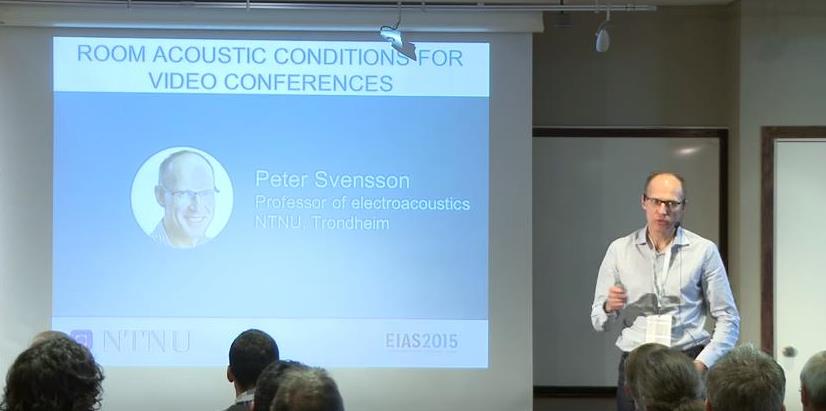
Watch this if you are interested in…
- Video conference room acoustics. These are rooms hosting three tasks at once 1) Meeting room 2) Recording room 3) Sound reproduction room (listening room)
- When two rooms are acoustically involved – but not the classical coupled situation. Two-room-acoustics vs coupled rooms
- EDT (Early Decay Time) and C50 (Speech Clarity)
- Listening test simulating directional microphones
- Acoustic advice and considerations for video conference rooms
(Full version, 23 min) Watch here
(Short version, 3,31 min) Watch here
Erling Nilsson (Acoustics specialist at Saint-Gobain Ecophon, Sweden) – Room – Acoustic model for evaluation of rooms with absorbent ceilings
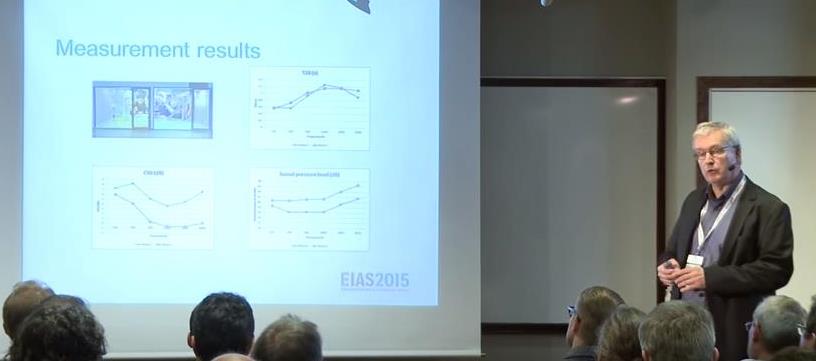
Watch this if you are interested in…
- Why more room acoustic parameters are needed than reverberation time
- SPL (Sound Pressure Level), RT (Reverberation Time), Speech Clarity
- Correlation between listening and room acoustic quality
- Energy modules for calculation of room acoustic parameters
- Decay curves in rooms with absorbing ceilings
- Scattering and diffuse sound fields
- Grazing sound fields, absorption and angle dependence for grazing incidence
- Comparison of acoustics measurements and calculations
(Full version 26,55 min) Watch here
(Short version 6,08 min) Watch here
Vijay Purandare (Acoustic Consultant, V N Purandare and Associates, India) – Relation between speech clarity & early reflections
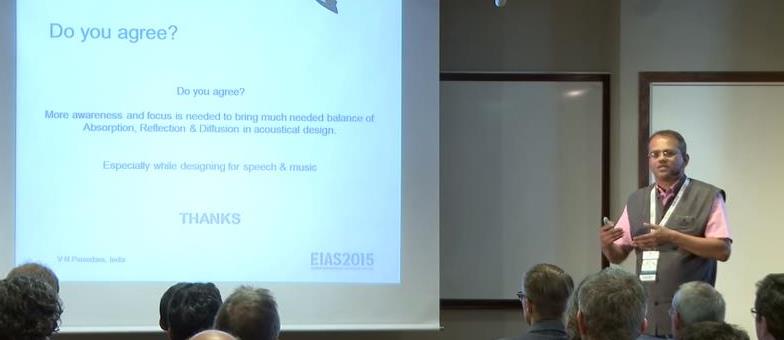
Watch this if you are interested in…
- Speech clarity and early reflections
- Lateral reflections
- Acoustic measurements
- The importance of reflections in acoustic design
- A balance between absorption, reflection and diffusion in acoustical design
(Full version, 6,32 min) Watch here
(Short version, 3,17 min) Watch here
Elmar Schröder (Managing Director, MüllerBBM GmbH, Germany) – Concept for graduation of office rooms in draft VDI 2569
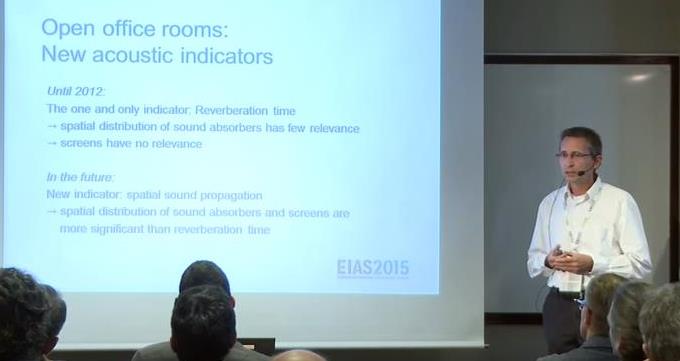
Watch this if you are interested in…
- German regulation and concept for graduation of office rooms
- Cellular and open office spaces
- Acoustic indicators
- Acoustic recommendations
- Sound attenuation
- Why we do not use STI and distraction radius
- Ceilings and screens
(Full version, 18,45 min) Watch here
(Short version, 3,03 min) Watch here
For all films from EIAS 2015, go here: Full versions and short versions.
A special thank you to our former editor Carsten Svensson for this post!

